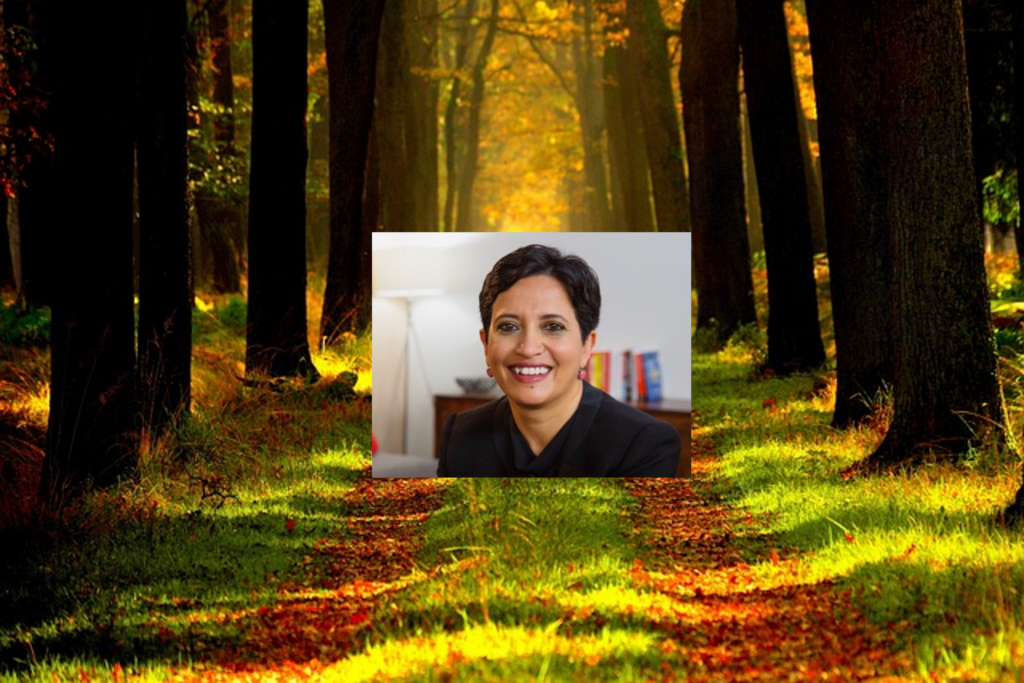Entrepreneur Journeys
The Startup Velocity Question: What Hinders Acceleration in VC Funded Companies?

I have been running 1Mby1M since 2010. I find myself saying to entrepreneurs ad nauseam that VCs want to invest in startups that can go from zero to $100 million in revenue in 5 to 7 years.
Startups that do not have what it takes to achieve velocity should not be venture funded.
Experienced VCs, over time, have developed heuristics to gauge what constitutes a high growth venture investment thesis.
>>>1Mby1M Udemy Courses with Sramana Mitra: Bootstrapping

Over the course of two years, we have released over 70 courses on Udemy with the aim to democratize entrepreneurship education at scale globally. This series of posts aims to help you find the one you need easily and provide you with discount coupons.
>>>Bootstrapping to Inc. 500: Tallie CEO Chris Farrell (Part 1)
Chris and his co-founder bootstrapped Tallie to a high growth Inc. 500 company in four years. After that, the product had to be re-architected, and slowed down for a couple of years, before picking up again. Read how they have competed in a crowded marketplace and built a robust position.
Sramana Mitra: Let’s start at the beginning of your journey. Where are you from? Where were you born and raised, and in what kind of background?
Featured Videos
Can 1M/1M Help Me Raise Money?
How Does 1M/1M Democratize Entrepreneurship Education?
How Does 1M/1M Democratize Management Consulting?
When Is The Right Time To Join 1M/1M?
Can 1M/1M Help Me With Business Development?
Can 1M/1M Help Me With Market Sizing?
Can 1M/1M Help Me Validate My Product?
Will I Have Private 1-on-1 Sessions In 1M/1M?
How Does 1M/1M Help Entrepreneurs Connect With Silicon Valley?
Mentoring or Consulting?
Why Does 1M/1M Charge $1000 a Year?
Why Does 1M/1M Partner With Local Organizations?
Why Don\’t Mentoring Networks Work?
Why Is It Important To Study With 1M/1M Now?
Dan Stewart Story
Vikrant Mathur Story
Building a Cloud-Based Property Management Platform, Ric Leutwyler, President of SkyTouch (Part 1)
Everything is moving to the cloud and hotels are no exception. Read on!
Sramana Mitra: Let’s start at the beginning of your journey. Where are you from? Where were you born and raised?
Ric Leutwyler: I was born in Austin, Texas. I have moved 18 times in my life and career in the US. I have a double degree in both Marketing and Human Resources as I had interest in both areas. I started my career with AT&T before the divestiture. It was one of the largest companies in the world. I was involved with different parts of the organization during my time there. I think I was in eight different roles in eight and a half years. >>>
Building a Global Enterprise Software Company from Portugal: Paulo Rosado, CEO of OutSystems (Part 1)
We’ve looked at a few case studies of European companies successfully turning themselves into global ones. SDL, Mendix, and Sitecore are just a few examples. In that select club, OutSystems is a key player.
Sramana: Paulo, let’s start out at the beginning of your story. Where were you born and raised? What was your journey like leading up to the OutSystems story?
Paulo Rosado: I was born in Portugal. I attended the Universidade Nova in Lisbon and I graduated with a computer science degree in 1988. In 1992 I went to Stanford University where I received my masters degree in computer science. I then worked in Silicon Valley until 1997. After that I returned to Portugal to start my own company. >>>
Bootstrapping Using Services, Scaling Using Content Marketing: John Sundberg, CEO of Kinetic Data (Part 1)
You have heard me discuss bootstrapping using services quite a lot. Here, we also take on another important key strategy for customer acquisition: content marketing.
Sramana Mitra: Let’s start with some background. Where are you from? Where were you born and raised and in what kind of circumstances?
John Sundberg: I’m currently in St. Paul, Minnesota, which is where our office is. I was born in Minneapolis. I’ve been in Minnesota all of my life. My wife is from Connecticut. My upbringing was very open-minded. My dad taught positive attitude and sales training and indirectly, I’ve had that positive attitude all my life. He ran his own company. It was a small company. As a result of watching that while growing up, I thought I wanted to work in a big company. >>>
Bootstrapping Using Services from Montreal, Canada: Silanis CEO Tommy Petrogiannis (Part 1)
If you haven’t read my Bootstrapping Using Services book, you must. Here’s yet another case study following the same methodology.
Sramana: Tommy, let’s start with your backstory. Where are you from?
Tommy Petrogiannis: I was born and raised in Montreal, Canada and I still live there. Both of my parents are first generation immigrants. Watching them as I grew up, I learned to value the work that goes into earning a buck. The difficulty of earning cash for your business really made an impression on me. I learned that you need to watch cash very carefully when you are building a business. I am an electrical engineer by education. I was always excited by how technology changes every day. >>>
Bootstrapping a Language Product Company Using Services from London, Then Taking it Public and Scaling It to $450M: SDL CEO Mark Lancaster (Part 1)
Very few technology companies have been built from the UK. ARM and Autonomy come to mind. Here’s the story of a lesser-known company called SDL.
Sramana: Mark, let’s start with the beginning of your personal story. Where are you from? What is the backstory of the SDL story?
Mark Lancaster: I was born and raised in the UK. I studied engineering and computer science at the university. I started my career as a software design engineer at Satchwell Control Systems and Lotus Development Company. Fairly early on, one of the biggest issues I saw at companies was the need for coders or programmers to engage effectively with management. >>>
Bootstrapping a Cloud Startup with Services on Force.com from London: Alex Fuller, Co-Founder and CTO of CloudSense (Part 1)
The Force.com platform has been a great bootstrapping device for entrepreneurs. Read how Alex and Richard Britton bootstrapped CloudSense to a sizable product company on the platform.
Sramana: Alex, let’s start with your personal journey. Where were you born and raised? What are the roots of your entrepreneurial story?
Alex Fuller: I was born in Wimbledon in the UK where the tennis championship is held. My educational background was not focused on technology. I studied classics at Oxford University, which focused on Latin, Greek, and Linguistics. Before that, I had already acquired an interest in technology. I got into computing as a child when I was 12 years old. I had a keen interest in computing throughout my school years. >>>
Building A Profitable, Steady Growth Subscription Business: Expensify CEO David Barrett (Part 1)
VCs in Silicon Valley want financial levers that allow you to grow with a hockey-stick curve. Expensify doesn’t have that. In my opinion, however, they have built an excellent, profitable, steady growth subscription business that has an attractive viral characteristic. The business, at some point, may accelerate naturally, but as David notes, the levers are not financial. Very interesting case study.
Sramana Mitra: Let’s start with your personal background. Where were you born and raised? Tell us a little bit about your childhood.
Unicorn in the Making: Veeam CEO Ratmir Timashev (Part 1)
You have read some of the Unicorn Series pieces already: Tableau, FireEye, RightNow, Palo Alto Networks and several others. Here’s a company that gets little coverage but is performing at Unicorn levels.
Sramana: Ratmir, let’s start our discussion by reviewing your background. Where are you from? What are the roots of your entrepreneurial journey?
Ratmir Timashev: I was born in Russia in 1966 in the mountains between the European and Asian region of Russia. I studied physics in Moscow and I attended the top science school in Russia. I was working on my PhD when perestroika came into being. Science was very prestigious under the Soviet Union and when perestroika happened, all that changed. Government funding suddenly stopped. The economy collapsed and science did not make sense. A lot of my friends who were studying science went to work in other areas. >>>
Building a Global Technology Company from Colombia: Ricardo Villadiego, CEO of Easy Solutions (Part 1)
We seldom see global technology companies being built out of Latin America, so what Ricardo and his team have been able to accomplish is very exciting. And to think that they are building a fraud prevention company out of Bogota, Colombia is truly impressive.
Sramana: Ricardo, let’s start at the very beginning of your story. Where were you born and raised?
Ricardo Villadiego: I was born in Cartagena, Colombia which is a small city in the north of the country. I was raised there until I was 15 and then I moved to Bogota to study to become an engineer. I moved there by myself. I finished my degree as an electrical engineer. Immediately after graduation, I went to work for Unisys Corporation. >>>
